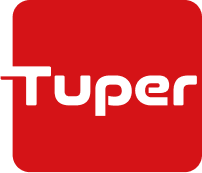The Expressão Magazine has put together a special edition to celebrate inspiring stories of entrepreneurs who are making a difference in Santa Catarina and on the national stage.
In the Leaders of Expression edition, the spotlight is on three market-leading industries with one thing in common: they are headquartered in the municipality of São Bento do Sul (SC – Brazil). Although the city was initially a furniture hub, it has become a reference for diversity in the industrial sector.
The Tuper Group’s journey is recounted through the words of Frank Bollmann, president and CEO of the company, whose professional history is indeed intertwined with that of the company. The edition details how Tuper has established itself as one of the largest steel processors in Latin America and a market leader, operating in eight diverse segments. The company has three manufacturing units and employs around two thousand collaborators.
Alongside Bollmann, also highlighted are Alexandre Wiggers, CEO of Condor, a manufacturer of brushes and other utensils, and Rafael Buddemeyer, director of Buddemeyer, in the premium segment of bed and bath clothing. All are part of leading national companies in their respective markets.
Publisher’s News celebrates the success of various sectors of the economy
The magazine launch also introduces the Entrepreneur’s Almanac. In it, business leaders reveal the traits that have propelled their ventures and, consequently, earned them prominent roles in the professional world.
In addition to being a showcase of the Santa Catarina business universe, the latest publication from Editora Expressão aims not only to reveal trends and highlight emerging businesses but also to profile successful entrepreneurs and executives who drive the economy.
The magazine was launched on April 11 in Joinville, and distribution will take place at entity events.
Previously, Editora Expressão had already delved into the tradition accompanying these major Santa Catarina companies. They published commemorative and historical books, such as the 50-year anniversary of Tuper and the 70-year anniversary of Buddemeyer. In addition to these, they also released “Santa Catarina: A History of Entrepreneurship,” launched at the end of 2023, featuring the nearly centennial pioneering spirit of Condor.
Click here to access the Leaders of Expression magazine edition.
The book on the 50-year history of Tuper is available on our Downloads page on the company’s website.
About Tuper
With 53 years of operation, Tuper is one of the largest steel processors in Latin America. The company keeps pace with market evolution with extensive product lines compliant with the most demanding national and international standards. The product portfolio includes, for example, solutions for application in industrial, automotive, civil construction, agribusiness, oil and gas, among others. Tuper’s steel solutions include structural and industrial tubes, conduits, galvanized conduits, scaffolding tubes, boiler tubes, condensers and heat exchangers, drawn tubes, Line Pipe API 5L, and Casing API 5CT. Additionally, they manufacture quick-connection tubular piles, steel coverings, structural profiles, ribbed composite slabs, scaffolding, metal props, wainscoting, slitters. Completing the product catalog are aftermarket exhaust systems, exhaust systems for automakers, automotive parts, and components. Tuper’s journey is marked by determination, audacity to create innovative solutions, and a commitment to offering excellent products for all segments they serve.
Learn more about Tuper.


















